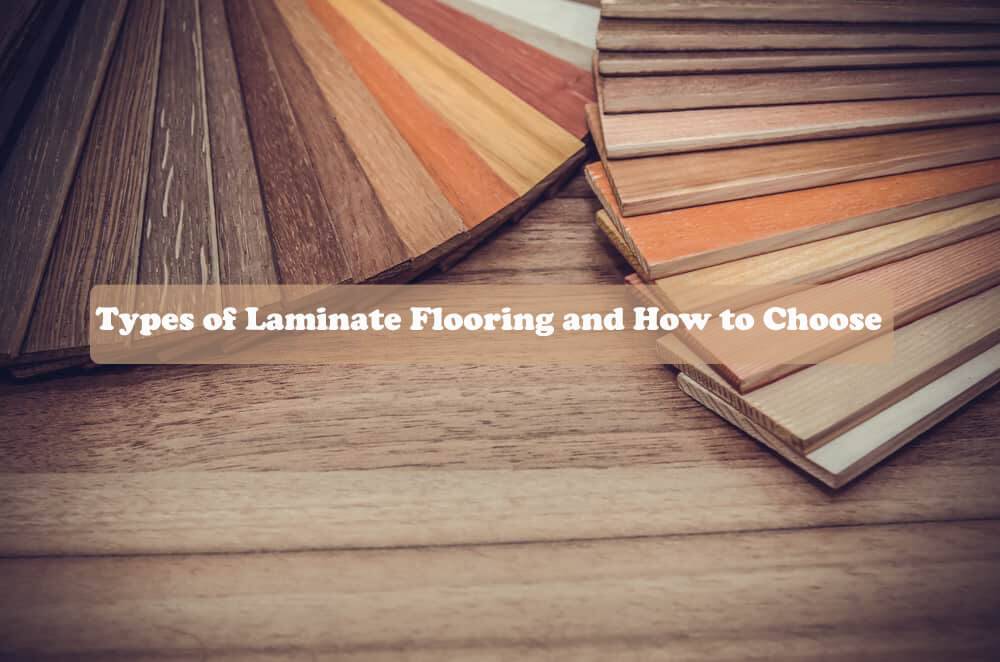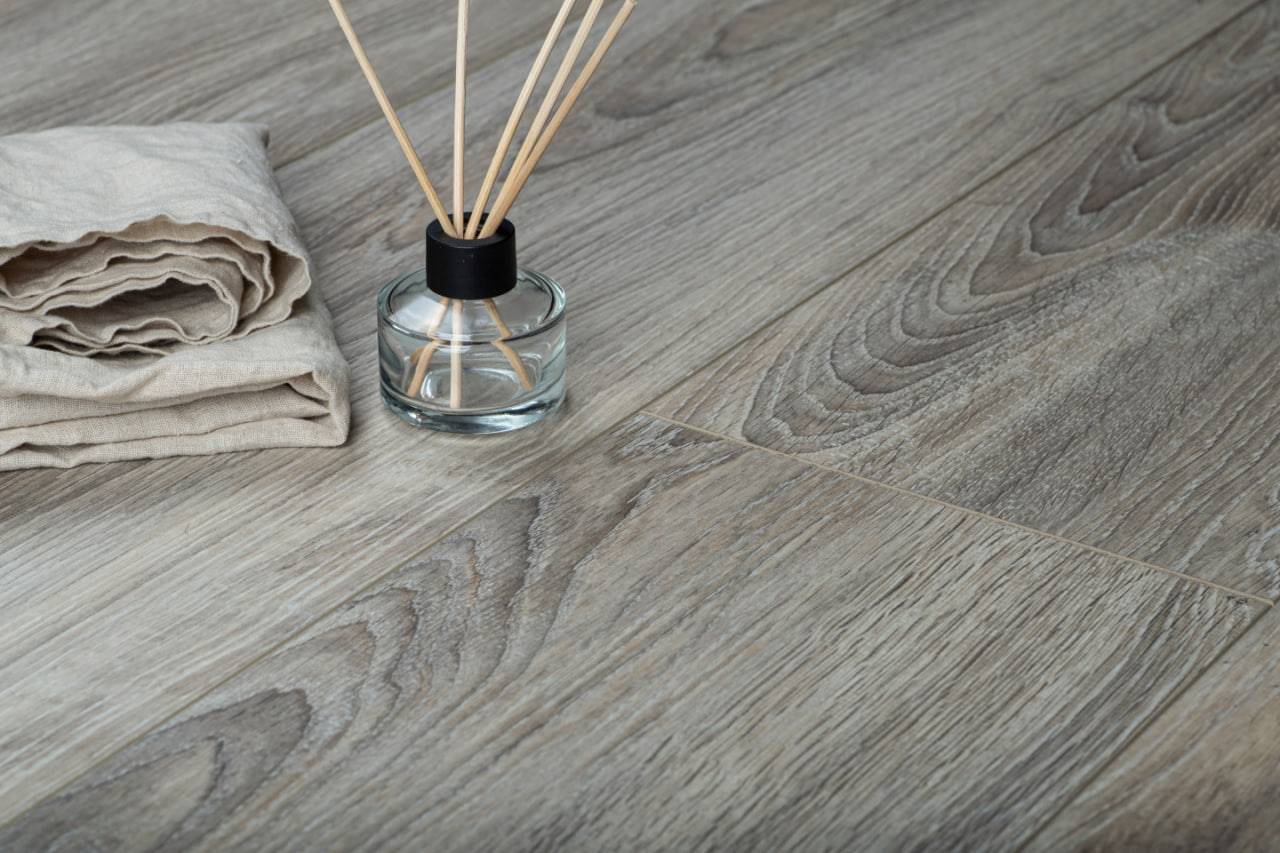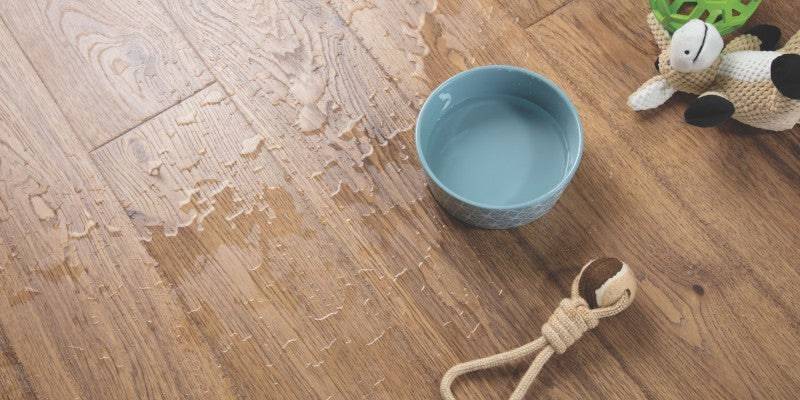Feeling overwhelmed by many types of laminate flooring choices out there? Whether you’re refreshing your space or building from scratch, you’ll quickly discover that the term “laminate” gets used pretty loosely. But fear not! This guide will help you navigate the world of laminate flooring and make an informed decision.
First things first: what is laminate flooring, anyway? It’s not magic, but it might seem that way with how it effortlessly mimics the look of various materials, most commonly hardwood. Unlike its centuries-old counterpart, laminate flooring is a fairly recent innovation, having emerged in the mid-70s.
So, what gives laminate its chameleon-like abilities? It’s all thanks to its layered construction. The top layer, where the magic happens, features a high-definition image protected by a durable, transparent shield. This allows laminate to convincingly replicate the look of wood, stone, tile, and even more, all while being significantly more budget-friendly.
Ready to dive deeper and find the perfect laminate for your project? Stay tuned for more tips on choosing the right thickness, AC rating, and style to match your needs and vision!
Demystifying Flooring: Laminate and Lookalikes
While you’re right about the distinct layers of true laminate flooring – wear layer, image layer, core, and optional underlayment – it’s important to distinguish it from similar-sounding options:
Engineered Hardwood:
This premium flooring boasts a real hardwood top layer, offering an authentic wood experience. While often categorized alongside laminate due to its layered structure, its genuine wood composition sets it apart.
Vinyl Plank Flooring:
Don’t be fooled by the similar plank format! Vinyl flooring is entirely synthetic, with no wood involved. Its affordability and water resistance make it popular, but the look and feel differ significantly from laminate.
Remember:
Each flooring material has unique strengths, weaknesses, and price points. Understanding these distinctions empowers you to make informed choices for your project. Here’s a quick breakdown:
| Feature | Laminate Flooring | Engineered Hardwood | Vinyl Plank Flooring |
| Composition | Multi-layer, synthetic | Multi-layer, real wood top | Synthetic |
| Look & Feel | Mimics wood, stone, etc. | Authentic wood feel | Varies, often mimics wood |
| Durability | Moderate | High | Moderate |
| Water Resistance | Moderate | Low | High |
| Price Point | Lower | Higher | Lower |
Finding Your Groove: Choosing the Perfect Laminate Plank Style
Laminate flooring shines in its versatility, mimicking the beauty of natural materials like hardwood while offering a diverse range of patterns and plank styles. This makes selecting the right one for your space exciting!
The Key Factor: Size Matters
While traditional laminate planks follow classic hardwood dimensions, today’s options offer both wider and narrower variations, each with its own charm and suitability:
Spacious & Sophisticated: Wide Planks
- Ideal for larger rooms where they showcase their presence, creating a sturdy and luxurious feel.
- Great for highlighting open floor plans and bringing a touch of modernity.
Cozy & Adaptable: Narrow Planks
Perfect for smaller rooms and uneven subfloors, as their flexibility gracefully navigates imperfections.
- Add a touch of intimacy and warmth to smaller spaces.
- Create a classic and traditional feel reminiscent of older hardwood floors.
Ultimately, the best plank style depends on your personal preference and room characteristics. Consider the available space, desired atmosphere, and existing design elements to find the perfect match for your vision.
Beyond Width: Exploring More Options
Remember, plank width is just one piece of the puzzle! Explore other exciting possibilities like:
- Length variations: Experiment with varying plank lengths within your chosen width for a dynamic and visually interesting floor.
- Patterns: Go beyond straight-lay with diagonal or herringbone patterns for a unique and eye-catching statement.
Navigating the Waters: Understanding Waterproof and Water-Resistant Laminate
When it comes to laminate flooring, choosing between “waterproof” and “water-resistant” options can be confusing. Let’s shed some light on these terms and help you make the best decision for your needs.
Waterproof Laminate Flooring:
Ideal for: High-moisture areas like kitchens, bathrooms, basements, and homes with pets and kids.
The truth: While called “waterproof,” it’s crucial to understand it’s not invincible. The key lies in the top layer, which should effectively repel water if installed correctly following strict guidelines. These guidelines often involve specific underlayment, adhesives, and installation techniques. Any deviation can void the warranty and leave you vulnerable to water damage.
Remember:
- Even “waterproof” laminate features a fiberboard core that can swell if exposed to moisture, so promptly wipe up spills.
- While it performs well against spills, it’s not designed for submerged areas like showers.
Water-Resistant Laminate Flooring:
Ideal for: Lower-moisture areas like living rooms, dining rooms, and accent walls.
The difference: It resists water penetration for a limited time, but eventually, water can seep through the surface. Consider it a protective shield, not an impenetrable barrier.
Things to remember:
- Spills require faster attention compared to waterproof varieties.
- It’s not suitable for high-moisture areas or places prone to frequent spills.
Ultimately, the best choice depends on your specific needs:
- High-moisture zones: Opt for waterproof laminate, but meticulously follow installation instructions and promptly clean up spills.
- Moderate moisture areas: Water-resistant laminate can be a cost-effective solution, but be mindful of spills and avoid prolonged moisture exposure.
Finding Your Perfect Match: Choosing the Right Laminate Flooring
Laminate flooring offers a diverse range of options, but navigating them can be daunting. Fear not! By understanding your priorities and key features, you can find the perfect fit for your home.
Top Priority: Activity Level
Think carefully about your household’s activity level. From playful pets to rambunctious kids, not all laminate is built equal. Here’s where the AC rating (Abrasion Class/Criteria) comes in:
- AC1: Light traffic (bedrooms, guest rooms)
- AC2: Moderate traffic (living rooms, hallways)
- AC3: Heavy traffic (entryways, kitchens)
- AC4: Light commercial (businesses with moderate foot traffic)
- AC5: Heavy commercial (high-traffic businesses)
Choose a rating that suits your busiest spaces to ensure lasting durability.
Boosting Resale Value:
While not quite reaching the heights of hardwood, high-quality laminate flooring can enhance your home’s value, especially if it replaces low-end flooring. Consider it an investment that improves marketability and potential value increase.
Price vs. Performance:
Don’t equate high price with high quality. Today’s laminate offers affordability without sacrificing performance. However, lower prices often mean lower AC ratings, thinner materials, and less water resistance.
Waterproof or Scratch-Resistant?
Think about your needs. Prioritize water resistance for moisture-prone areas like kitchens and bathrooms. Scratch resistance is key for high-traffic zones or homes with pets. Choose the features that matter most to you.
DIY Friendly? Installation Methods Matter:
If you’re a DIY enthusiast, consider the installation method. Click-lock options are quick, easy, and ideal for most skill levels. Glued systems require more expertise and can be messy. Explore the different methods and pick one that matches your comfort level.
Bringing it All Together: Your Personal Laminate Journey
With laminate flooring’s versatility, affordability, and ease of installation, it’s no wonder it’s a popular choice for modern homes. Remember, the key lies in understanding your needs and priorities. Whether it’s bustling family life, pet-friendly resilience, or simply a budget-conscious upgrade, there’s a laminate option perfectly suited to your vision.
Consider this your roadmap to laminate success:
- Evaluate your activity level: Choose the right AC rating for lasting durability.
- Think value: Premium laminate can boost your home’s appeal.
- Balance price and performance: Don’t equate cost with quality, but understand trade-offs.
- Prioritize features: Choose water resistance or scratch resistance based on your needs.
- Embrace DIY if it suits you: Click-lock installation is perfect for most skill levels.
By following these pointers and exploring the diverse offerings of the laminate world, you’ll undoubtedly discover the perfect match for your space. So, embark on your laminate journey with confidence, knowing you’re equipped to make the best choice for your unique needs and create a beautiful, functional space that reflects your style and personality.
Laminate Flooring FAQs: Your Quick Guide to Choosing the Right Floor
Is laminate flooring truly waterproof?
While some products are labeled “waterproof,” it’s crucial to understand this doesn’t mean invincible. They excel at repelling water on the surface, but only if installed meticulously following specific guidelines. Spills still require prompt cleaning, and submerged areas are off-limits.
How scratch-resistant is laminate flooring?
This depends on the AC rating. Opt for higher ratings (AC3+) for high-traffic areas or homes with pets. Lower ratings (AC1-2) might be suitable for bedrooms or guest rooms with less activity.
Can I install laminate flooring myself?
Absolutely! Most laminate flooring offers click-lock installation, making it quick and easy for DIY enthusiasts. However, ensure you understand the specific method and gather the necessary tools before starting. Glued systems require more expertise and can be messy.
How does laminate flooring compare to hardwood flooring?
Laminate offers affordability, easier installation, and wider variety in designs. Hardwood boasts a timeless natural look, unique grain patterns, and higher resale value, but comes at a steeper price and requires more maintenance.
What’s the best cleaning method for laminate floors?
Regular sweeping or vacuuming paired with occasional mopping with a microfiber mop and water-based cleaning solution is ideal. Avoid harsh chemicals, soaps, and excessive moisture to maintain the floor’s beauty and longevity.
Can I use laminate flooring in bathrooms or kitchens?
While waterproof options exist, proceed with caution. Ensure proper installation and prompt cleaning of spills. Consider alternative flooring options for areas prone to frequent water exposure or standing water.
What’s the lifespan of laminate flooring?
With proper care and choosing the right AC rating for your needs, well-maintained laminate flooring can last 10-20 years or even longer.
What are some popular trends in laminate flooring?
Wide planks, distressed finishes, and realistic wood and stone looks are currently trending. Don’t be afraid to explore unique textures and patterns to create a personalized and stylish space.
Where can I find more information about specific laminate flooring products?
Many manufacturers and retailers offer detailed product information online and in stores. Consult their websites or visit showrooms to explore different options and get expert advice tailored to your needs.





